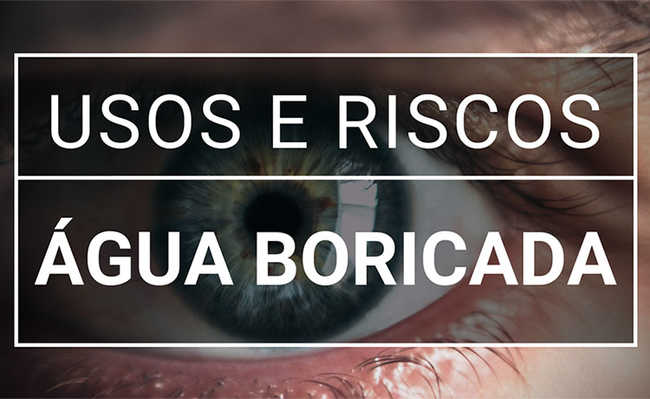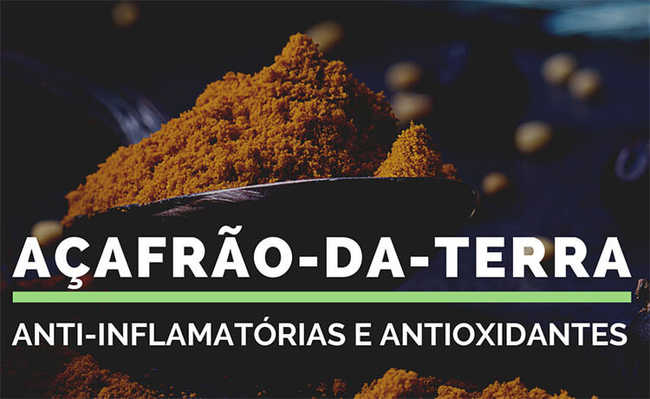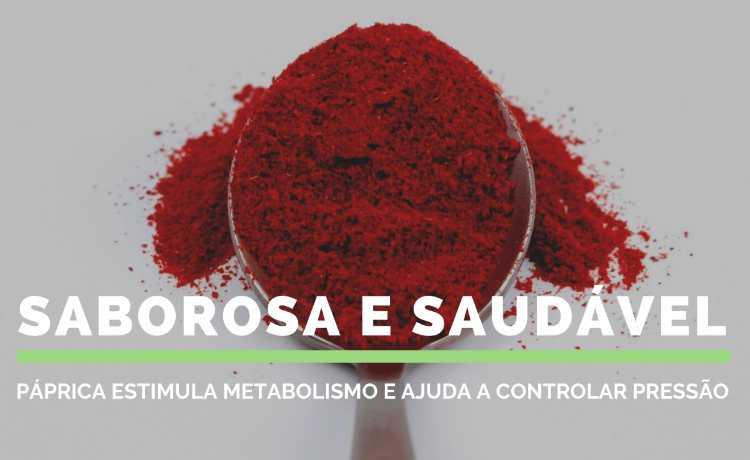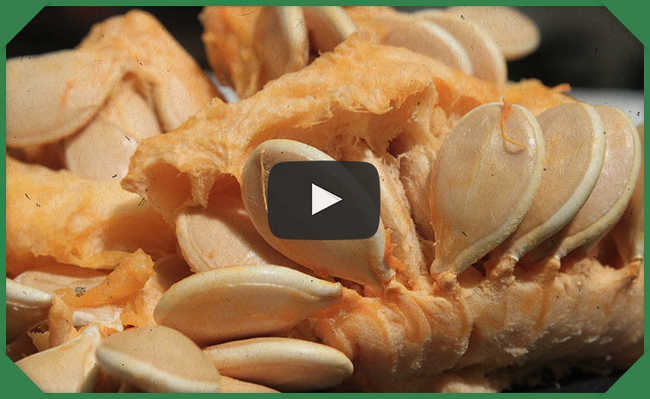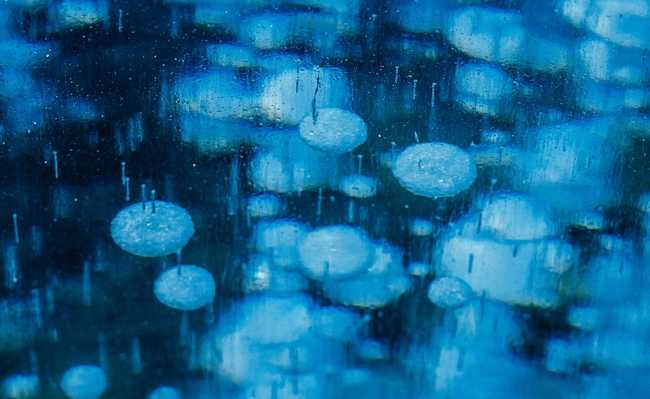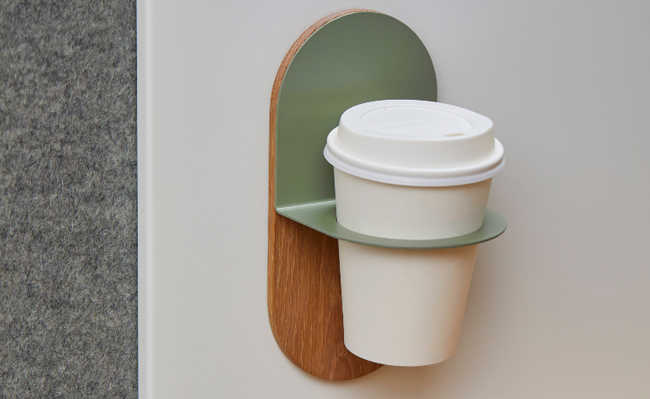Brazil's water infrastructure: legislation, river basins, water resources and more
Learn how the Brazilian water infrastructure works
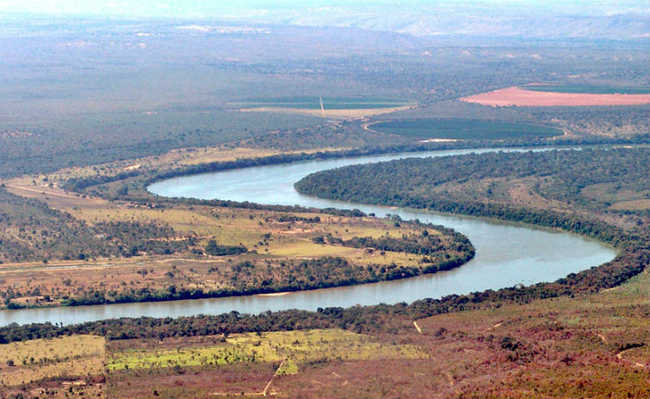
Infrastructure, in general, is the set of services that are essential for a society. The water infrastructure, in turn, is the set of essential services related to water supply and distribution.
Brazil is the country that holds the largest amount of fresh water in the world (about 12% of the existing total), and it is distributed in rivers, lakes, aquifers and dams. However, this is not enough for all our water needs to be met. For this to happen, in addition to a sufficient amount of water, an adequate water infrastructure is needed, supported by laws, technologies and viable policies.
Legislation
Legislation relating to water resources in Brazil has not started now... As early as 1500 we had the first regularization of this resource, which prohibited the discarding of waste in water bodies that could harm fish and their offspring.
In 1938, the Water Code was enacted, valid to the present day. It establishes that water bodies in national territory belong to the Union.
More recently, influenced by debates on environmental issues, we had the implementation of the National Water Resources Policy (PNRH). With much more specifications than previous regulations, the PNRH establishes that the rationalization of water resources is one of the principles for the preservation of environmental quality.
This policy creates the National Water Resources Management System, the National Water Resources Council, the National Water Agency and a series of fundamentals, guidelines, actions, instruments, etc.
The PNRH determines that multiple uses of water resources must be prioritized. For example: a dam used for irrigation can also be used for domestic water supply, and water dammed by a hydroelectric plant can be used for tourism (example of the Itaipu Power Plant), among other examples.
In addition, the PNRH establishes that the management of water resources must be based on the division by river basin.
Division by river basins
Altogether, Brazil is divided into 20 thousand hydrographic sub-basins, allocated into 12 hydrographic basins. As you can see on the map below:
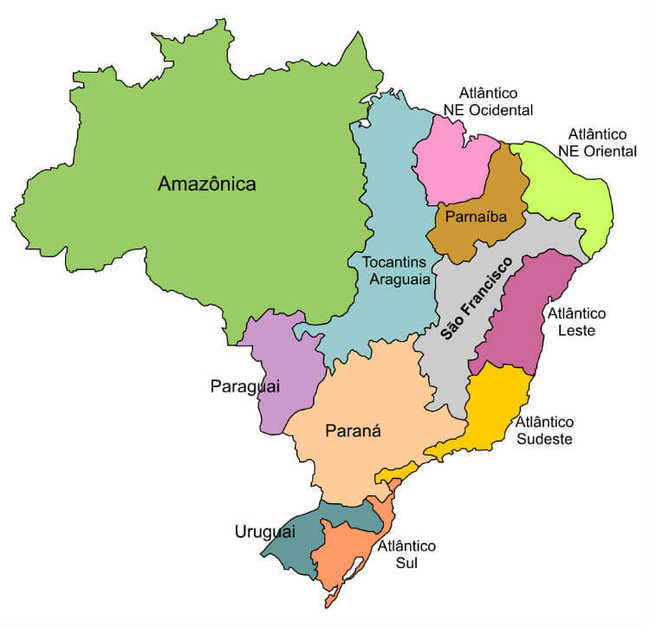
In total, we have a lot of water, but it is unevenly distributed: 73.6% of the country's surface water resources are in the Amazon basin, while in the northeast region the availability of water resources is scarce.
Water as a water resource
Water has many uses. It can be used for energy generation (hydroelectricity), for mining (tailing dam), engineering, industry, navigation, tourism, agriculture and for domestic consumption (drinking, bathing, cooking, etc.).
Among the three sectors that use water as an input, agriculture is the one with the highest consumption, around 70 to 80% of the total. The industry consumes about 20% of the total, and the water used for domestic consumption represents only 6%.
But a permission is needed for these uses, this permission is called a use grant.
Grant of the right to use water resources
According to the PNRH, water is a public good and its use is rationalized. In other words, despite being a public good, not just anyone can use it as a water resource indiscriminately.
And the grant is a control instrument, it works as an authorization for the use of water resources.
This authorization is given by the National Water Agency and is necessary in some cases, for example, to capture final use, as would be the case for a beer company and a domestic supply company. Or even to use its hydroelectric potential, among other examples.
water infrastructure
For each type of water resource use, a different type of water infrastructure is required.
Hydroelectric hydro infrastructure
In Brazil, the main source of electrical energy is hydraulic energy.
In the construction of a hydroelectric plant, in addition to a water body with sufficient flow for energy extraction, it is necessary to build a dam to retain water, water collection and transport systems, a powerhouse and a water restitution system to the natural river bed.
You can better understand this type of water infrastructure in the video.Brazil has hundreds of hydroelectric plants, but the biggest are the Itaipu hydroelectric plant (Paraná and Paraguay), the Belo Monte hydroelectric plant (Pará), the Tucuruí hydroelectric plant (Pará), the Jirau and Santo Antonio plants on the river Madeira (Rondônia) and the Ilha Solteira hydroelectric plant (São Paulo and Mato Grosso do Sul).
All energy produced by hydroelectric dams is distributed through wiring, and it feeds both our homes and industry. After being used to generate energy, the water returns to the water body.
Irrigation water infrastructure in agriculture
Despite feeding most of the population, family farming uses lower cost irrigation systems, while agribusiness, in addition to using more water, has greater resources to invest in this type of technology.
- In general, the water infrastructure employed in agriculture is quite diverse, some examples being gravity irrigation, flood irrigation and sprinkler irrigation. In gravity irrigation systems, the planting is done below the places where there is water resource available, in this way the water is transported by gravity and irrigates the planting through dispersers.
- In flood irrigation, furrows are opened in the land where water accumulates. This type is used in rice plantations.
- In sprinkler irrigation, water from a body of water is pumped into channels with sprinklers, where it will fall to the ground by means of water droplets in a large amount as if they were raindrops.
- In the country, 3.5 million hectares are irrigated. Gravity is the most used method (48%), while flood irrigation represents 42% and rill irrigation (other gravity methods) 6%.
- In the North region, due to high rainfall, the irrigation water infrastructure is limited to flood irrigation.
- In the Northeast region, despite being for many years a region with water scarcity due to droughts, it is thought that, with the transposition of the São Francisco River, with 70% of its water resources destined for irrigation, this picture will improve.
- The Southeast region concentrates mechanized irrigation techniques, which makes it possible to cultivate different crops more than once a year.
- In the southern region, due to weather conditions, irrigation is mainly by floods, for rice production.
- In the Midwest region, irrigation uses the water resources of the perennial rivers present there.
Water supply infrastructure
The water supply infrastructure is a little different according to each company that offers the service. But as a rule, to offer the water supply service, first, water availability for water collection and the granting of the right to use it is necessary.
In Brazil, the supply system takes place from surface sources (47%), underground (39%) and mixed (14%), being carried out by public and private companies.
The supply system can be integrated or isolated. In the integrated, several municipalities are served, where the demand is usually greater, for example in metropolitan regions or with greater scarcity, such as in the semiarid region. In the isolated area, only one municipality is supplied.
underground water resources
Underground water collection is done by submerged pumps inserted in wells or collection boxes. Due to the geological factors of the rocks that filter and purify water naturally, this resource is advantageous in relation to surface water, not requiring prior treatment.
The use of groundwater is also advantageous because it does not occupy surface space, is less influenced by climatic variations, can be collected close to the place of use, has a constant temperature, is cheaper, has greater reserves, among other advantages.
surface water resources
Superficial reserves, dammed naturally or artificially, in general, after filtering, receive coagulants so that suspended matter gathers to form flakes. After the formation of these flakes, they decant, forming a layer of sludge at the bottom of the reservoir that will be slowly collected by an automated scavenger shovel. The water closer to the surface, and therefore cleaner, is collected and drained into coal and sand filters. After this process, chlorine is applied so that it reaches the final consumer free of harmful microorganisms.
Post-consumption water infrastructure
Many people are very concerned about reducing water consumption, but few people think that reducing consumption also means reducing pollution, in the form of sewage.
- In 2013 alone, Brazilian capitals released 1.2 billion m³ of sewage into nature.
- In Brazil, unfortunately, 16.7% of the population still does not have access to sanitary sewage and only 42.67% of sewage is treated.
- In the North region, only 16.42% of sewage is treated. The total service rate is 8.66%, the worst situation of all.
- In the northeast region of the country, treated sewage is only 32.11%.
- In the Southeast region, sewage treatment covers only 47.39% of the total. And the sewage service rate is 77.23%.
- In the southern region, 41.43% of sewage is treated. The service rate is 41.02%.
- In the Midwest region 50.22% of sewage is treated. The average access to treated sewage does not even reach 50% of the total population.
There are several ways to treat sewage, but in general, treatment involves six steps: grating, decantation, flotation, oil separation, equalization and neutralization.
The grating is intended to sift all large waste. Decantation, in turn, will cause smaller residues to accumulate at the bottom, facilitating the separation of the liquid. Flotation will serve to separate even smaller solid components that have not decanted, through a physicochemical process that will form a solid foam on the surface, later separated from the liquid. Oil separation, equalization and further improve the separation of solids from liquids and neutralization will serve to balance the pH.
To avoid all these steps, one of the alternatives would be to implement the use of a dry toilet. However, before resource and allocation constraints, there is the cultural and customary barrier to such a change.

